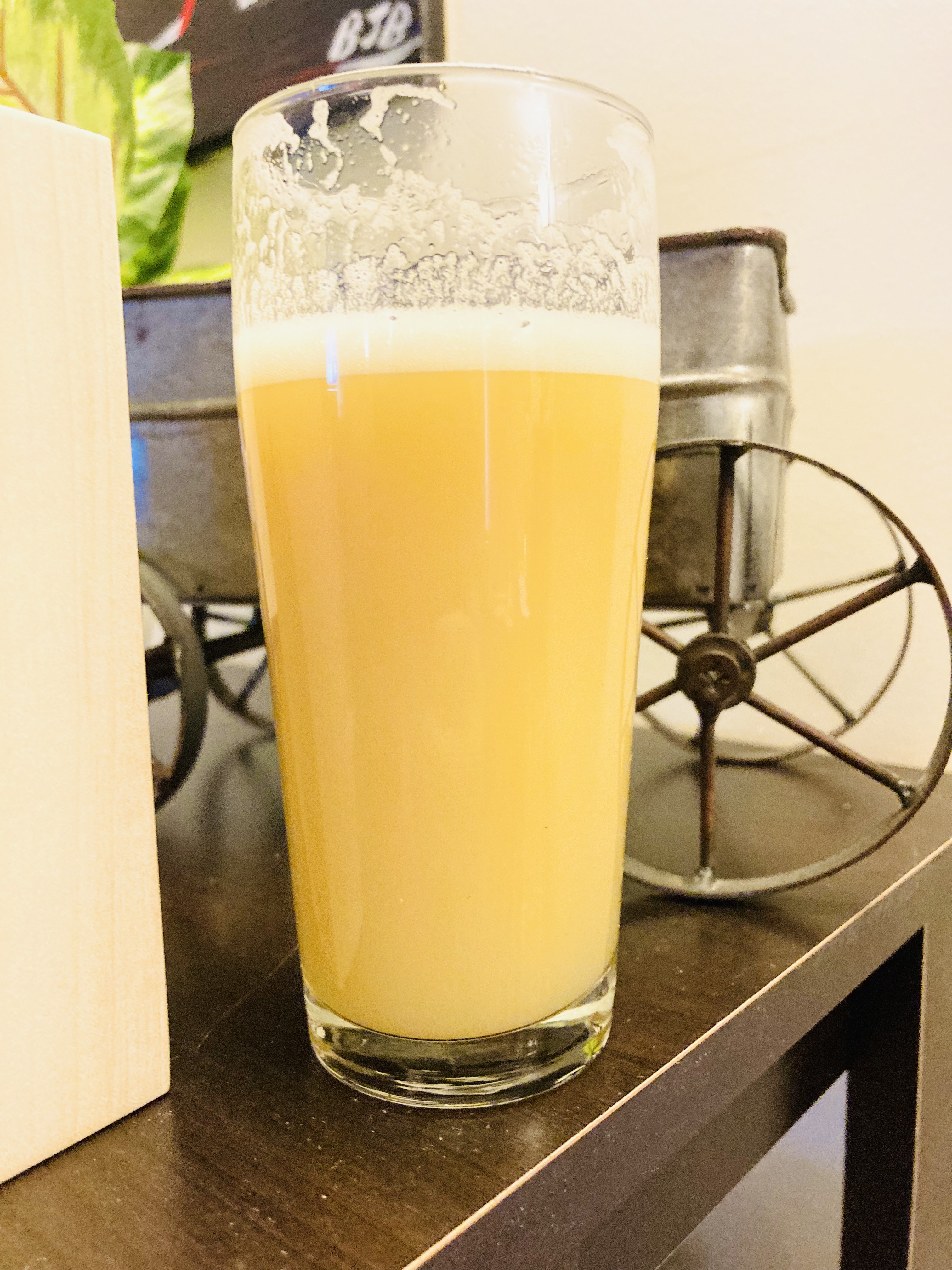I haven’t really shared any beers I’ve made in a while, but this one came out pretty good. I just kegged and carbed it and took a sample and it’s fantastic. I’ve made a lot of beers and this one is definitely towards the top of the list in terms of my favorites.
65% Mecca Grade Lamonta (2-row)
29% Mecca Grade Shaniko (white wheat)
6% Pilsner DME
Ca: 80
Mg: 10
Na: 62
Cl: 223
So4: 60
Mashed at 150
PH: 5.3
1.072 - 1.016 7.35%
Approximately 78% AA
10 min: 2oz mosaic
170 WP: 2oz mosaic, 2oz galaxy
DH: 6oz galaxy, 4oz mosaic lupomax
16 grams Verdant ipa yeast (based upon lallemand pitch rate calculator)
7 days at 68
2 days at 70
3 days at 72
I fermented the beer out and then dropped the temp to 60° for 24 hours, and then dropped it to 58 for an additional 24 hours. I then close-transferred it into the fermentation CO2 purged keg. At 58°, I popped the lid of the keg, and immediately started running CO2 through the gas post while I dropped in the dry hops. The lid was probably open for a maximum of 10 seconds. I then sealed it up and did 10 cycles of purging to 30 psi.
Over the next 12 hours I roused the keg three times, approximately every four hours. Each time I took it out of the Keezer I rolled it back-and-forth five or six times. I turned it upside down and back around a few times as well. I did this process four or five times each of the three times I took it out. It then sat in the keezer at 58 for another 12 hours, and then I did the exact same procedure I outlined before.
So in total, it was at 58° for 36 hours and I roused it six times. After the last time rousing it, I immediately set the chest freezer to 40°. It reached 40 in about four hours, and then I let it sit for another 24 hours at that temperature.
This dry hop keg had a floating dip tube with the small filter attachment on it. It’s similar to the Janish type filter that goes over the entire dip tube, but this one just goes right next to the floating ball.
I then jumped the beer from the dryhop keg into a liquid purged serving keg. Carbed it up and took a sample and it’s really really good.
The first and main thing I notice is that I can absolutely pick out defined galaxy and defined mosaic flavors. I don’t have to search for them and convince myself that they’re there. They’re absolutely there in the forefront. The aroma is very strong and super pungent. Mouth feel is thick and lush and very full. I’m sure this will continue to mellow a little bit, as there is The slightest hint of hop burn. It’s really not too pronounced, but it’s just a little bit hot. But for being this young and having that many hops I’m pretty impressed. It’s immediately very drinkable.
Maybe someday I’ll figure out how to take a good picture of beer, but this should give you an idea. If you’ve ever had trillium’s headroom, which is a hugely hop saturated mosaic/galaxy beer, this is pretty close.
https://www.trilliumbrewing.com/beers/headroom
View attachment 761529View attachment 761530


















































![Craft A Brew - Safale BE-256 Yeast - Fermentis - Belgian Ale Dry Yeast - For Belgian & Strong Ales - Ingredients for Home Brewing - Beer Making Supplies - [3 Pack]](https://m.media-amazon.com/images/I/51bcKEwQmWL._SL500_.jpg)









